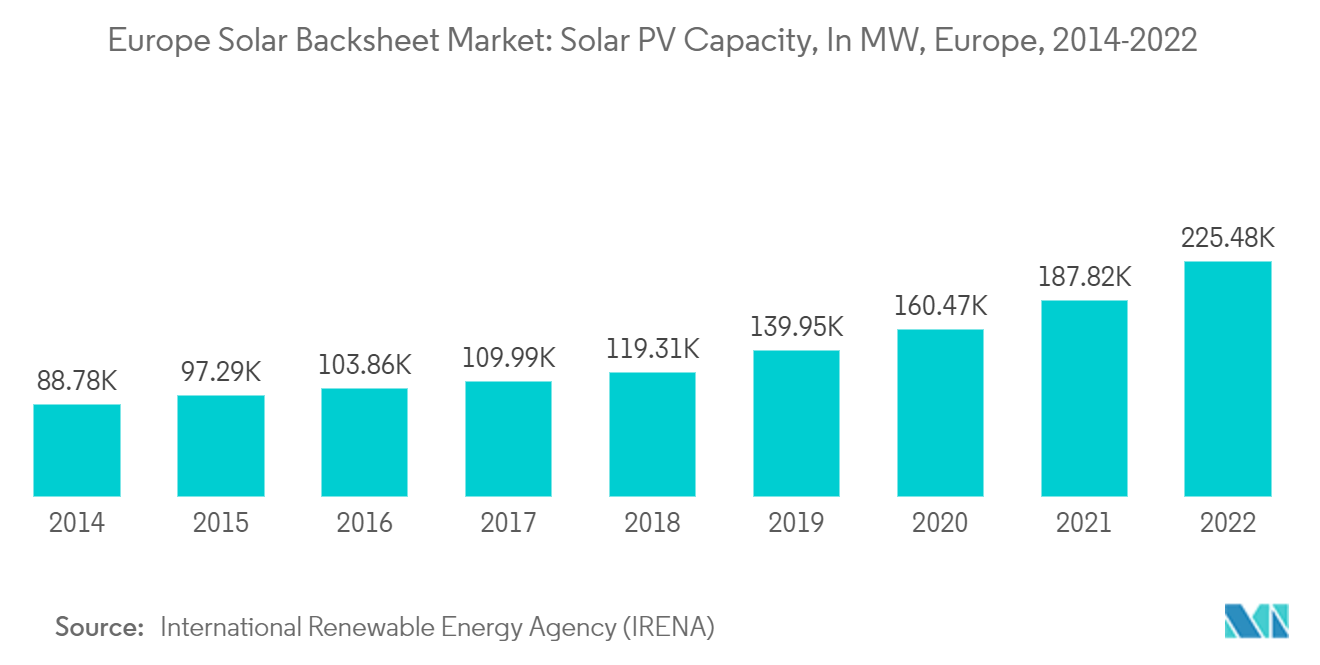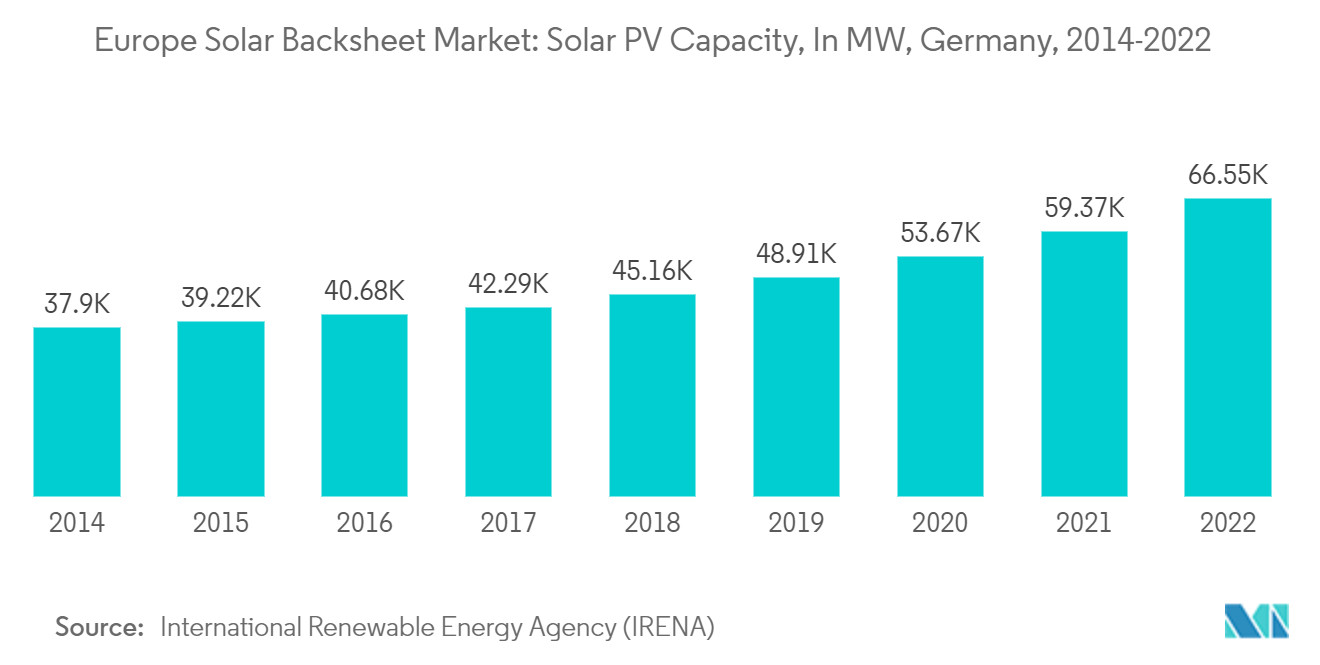Market Trends of Europe Solar Backsheet Industry
Fluoropolymer to Witness Significant Growth
- The back sheet laminate's primary job is to provide electrical insulation for the solar modules. Still, they also shield them from damaging environmental factors like UV radiation, moisture, extreme temperatures, tiny particles like sand grains, and harmful gases like ammonia, which help to avoid expensive failures.
- A fluoropolymer solar back sheet's inner, middle, and outer layers are joined to the solar panel's outermost layer. The primary materials used to create the inner and outer layers of the solar back sheet are polyvinyl fluoride (PVF) and polyvinylidene fluoride (PVDF). In contrast, polyethylene terephthalate makes up the intermediate layer (PET or polyester).
- Fluoropolymers are a crucial component of the European Green Deal and are employed in many parts of renewable energy installations, including PV panels and hydrogen fuel cells. They are also utilized in energy storage devices like lithium-ion batteries and PEM fuel cells. Both PV and wind energy installed capacities are rising significantly.
- In 2022, Europe's total solar photovoltaic capacity accounted for 225.4 thousand MW. The PV capacity is expected to rise in the forecast period, driving the solar backsheet market.
- Hence, with additional benefits than non-fluoropolymer, the segment will likely have high adoption in solar energy projects. Further, mass production is expected to reduce prices and boost the segment during the forecast period.

Germany to Witness Significant Growth
- With the cost of solar PV modules and energy storage systems reduced and the added benefit of reduced ancillary cost at the time of peak demand, the solar PV market is likely to increase during the forecast period, which, in turn, is expected to drive the solar back sheet market in the country.
- Moreover, Germany's government has set a target of raising its solar power capacity to 200GW by 2030, for which the country's government is planning to increase solar tenders to 20GW.
- In October 2022, Berlin, which is suffering from the effects of its over-reliance on Russian fuel and wants to reduce its dependence on Chinese technology, asked Brussels for assistance in reviving its solar panel industry and enhancing the security of the bloc's energy supply.
- In 2022, Germany's total solar photovoltaic capacity accounted for 66.5 thousand MW. The PV capacity is expected to rise in the forecast period as the backsheet is used to cover the back of solar PV modules, thus driving the solar backsheet market.
- Overall, in Germany, the solar backsheet market is expected to dominate due to increasing investment in solar PV module installation.


